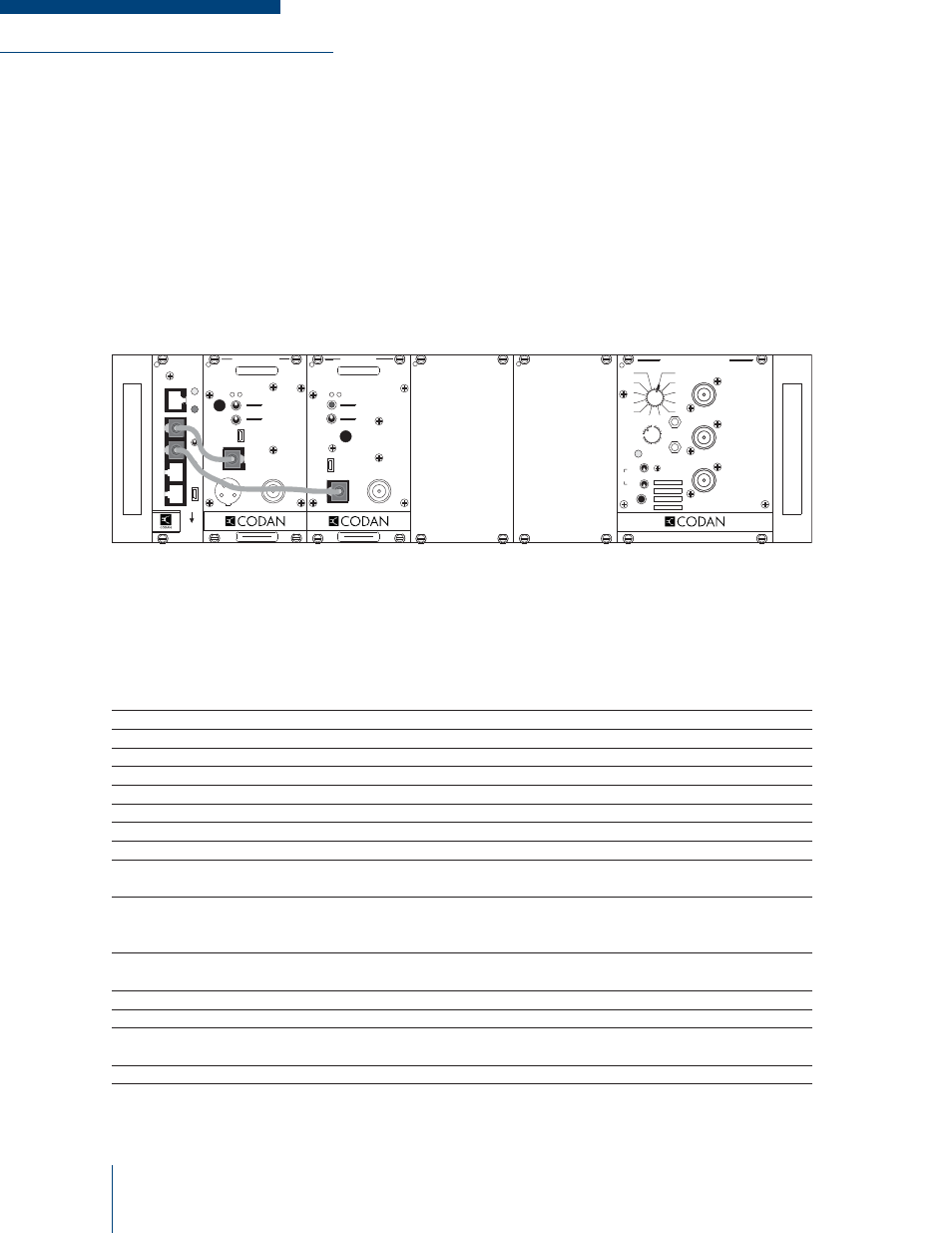Digital ethernet base station operation, Figure 3-6: mt-4e digital ethernet base station – Codan Radio MT-4E Analog and P25 Digital - User Guide User Manual
Page 26

USER GUIDE | MT-4E ANALOG & P25 DIGITAL RADIO SYSTEMS
Chapter 3: MT-4E Radio System Confi gurations
Page 18
DIGITAL ETHERNET BASE STATION OPERATION
The MT-4E modules may be confi gured to operate as a digital Ethernet controlled base station using
the UIC-4-00 Universal Interface Card (UIC). The UIC supports the DFSI as published in the P25
standard document TIA-102.BAHA. The UIC provides a fully end-to-end digital link between consoles
and subscriber units and supports analog-mode calls as well as P25 calls. The UIC transports digital
P25 audio data packets (IMBE™) between the console and the transmitter and receiver radio modules
without any conversion to or from baseband audio. This Ethernet interface allows digital signals (such
as NAC, TGID, Source ID) to be passed through the network to and from web based applications and
digital consoles. Figure 3-6 shows the UIC card used in the fi xed station Ethernet interface system.
Figure 3-6: MT-4E Digital Ethernet Base Station
The UIC uses Codan LVDS serial data to transport digital information between the UIC and the receiver
and transmitter modules. This preserves a fully end-to-end digital link, including audio encryption.
Analog voice is carried via the DFSI as digitized u-law pulse-code modulation (PCM) audio data.
The UIC supports all of the following features:
• Audio Reception and Transmission using IMBE™ (P25) or u-law PCM (analog).
• Passes all received P25 data to the console (NAC, TGID, MFID, ALGID, KID, etc.).
• Full end-to-end digital encryption if supported by the console and subscribers.
• Outbound audio buffering when transmitting P25 mode calls, with a programmable buffer length.
• Channel and Bank control of receiver and transmitter modules (2 banks of 16 channels each).
• Detect the mode (analog or P25) of an inbound call on the receiver and report to the console.
• Receiver squelch selection (muted or unsquelched) controlled by the console.
• Monitors the states of the transmitter’s forward and reverse alarm signals and report to the console.
• Clear the encryption keys from all encryption-equipped radio modules through the UIC’s front panel
Zeroize Key push button or from the console.
• Control and monitoring of 8 digital general purpose input and output (GPIO) signals from the console.
The 4 inputs are 10 mA max., 0 to +1 Vdc low / +2 to +13.8 Vdc high. The 4 outputs are 20 mA max.,
0 Vdc low / +5 Vdc high.
• Control and monitoring of 8 analog GPIOs for use with external equipment. The 4 inputs are 0 to +3.3
Vdc, 3 k
impedance. The 4 outputs are 20 mA max., 0 to +3.3 Vdc.
• Monitoring power supply voltage levels and reporting to the console.
• Programmable simplex mode operation.
• Local repeating under the control of the console, or automatically when the UIC is not connected to
a console.
• Current draw of 128 mA maximum.
TRANSMITTER
CNTL
BUS
MIC
RF OUT
A D
ANALOG
DIGITAL
NORM
OFF
KEY TX
MIC MODE
REF
IN
USB
FREQUENCY (MHz)
MADE IN CANADA
MODEL # CODE
RECEIVER
NORM
SQ. DISABLE
OFF
CNTL
BUS
A D
RF N
I
REF
IN
USB
FREQUENCY (MHz)
MADE IN CANADA
MODEL # CODE
UIC
RX B
TX B
RX A
TX A
PULL DOWN
TO REMOVE
ETHERNET
ZEROIZE
KEY
USB
2
1
5
4
3
6
7
8
11
10
9
FUNCTION
12
SYSTEM REGULATOR
MADE IN CANADA
VOL
METER
+
-
ON
OFF
SPKR
INT
EXT
EXT
SPKR
ANTENNA A
RX A
TX A
